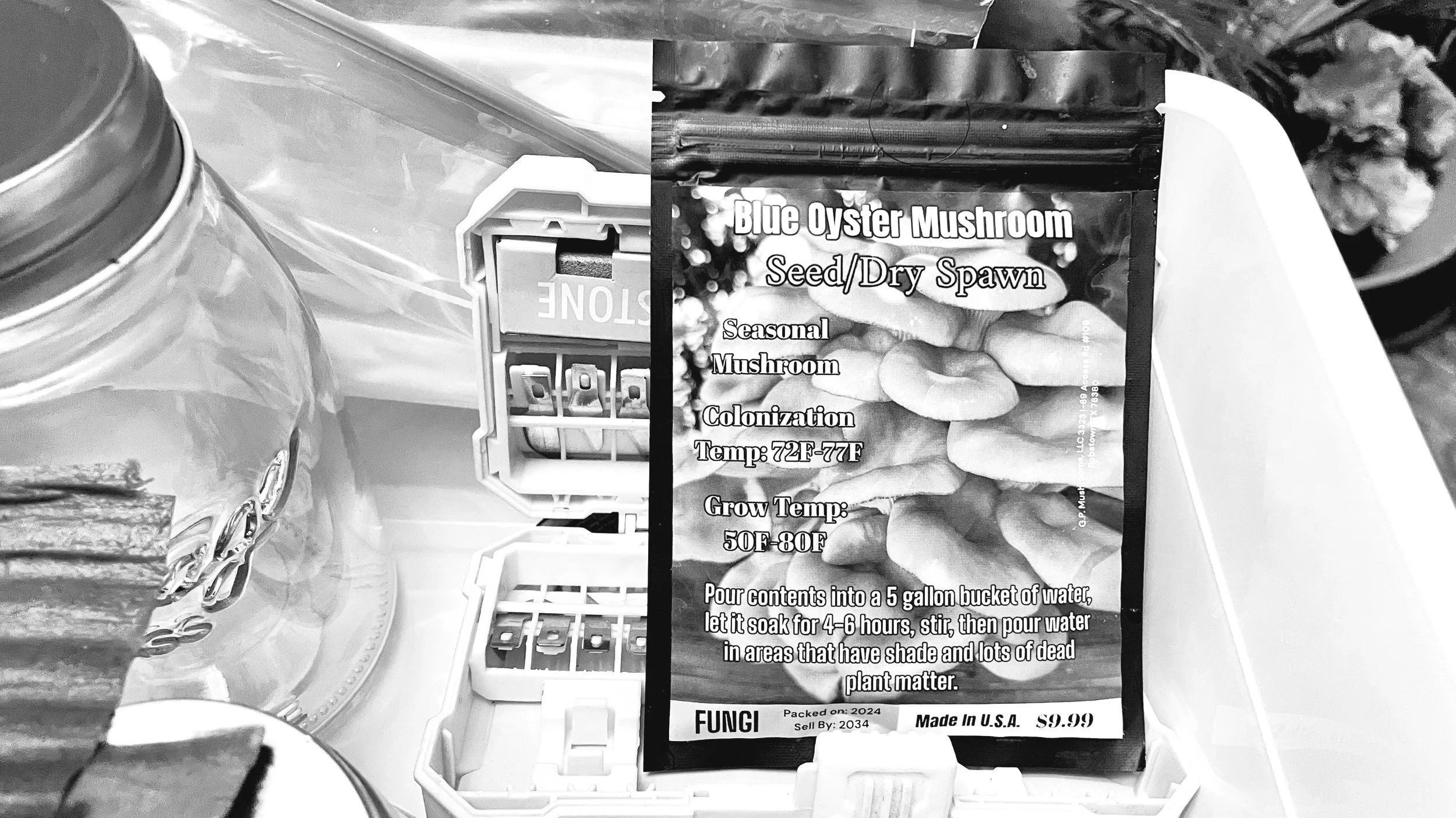For this final project, I decided to work with the aggressive species, Blue Oyster Mushroom; Scientific Name / Pleurotus ostreatus var. columbinus. Blue Oysters typically grow natively in temperate and subtropical regions of the northern hemisphere, including North America, Europe & Asia.
Blue oyster mushrooms are an incredible fungus, a primary decomposer that relies solely on its own capabilities to break down deadwood material. With benefits as a food source for human consumption, this species also has anti-inflammatory properties, helps to regulate blood sugar, mitigates various types of cancer, and is great for heart health.
Blue oyster mushrooms are rich in nutrients, including fiber, protein, vitamins, and minerals.
Typical incubation of this strain can vary depending on the location and climate. Right, now, we’re at the midway-end point of winter in New Jersey, USA. In the past four weeks, we’ve experienced full snow days, with an average temperature of 35° F [1.7° C]. Blue oyster mushrooms thrive in temperatures between 55-75° F, and mycelial colonization can occur in 14-21 days of inoculation.
Pinning occurs with humidity sustaining in the 85-95% range, with visibility within a week of enduring these conditions. Fruiting can occur anywhere from 5-14 days after pinning, of course depending on the conditions.
This particular brand of Blue Oyster Mushroom Dry Spawn labels the ideal colonization temperature at 72-77° F, with growing temperatures between 50-80° F.
-
North American Mycological Association: https://namyco.org/
New Jersey Mycological Associaton:
https://www.njmyco.org/
